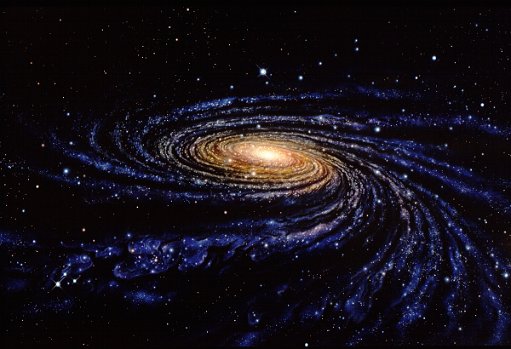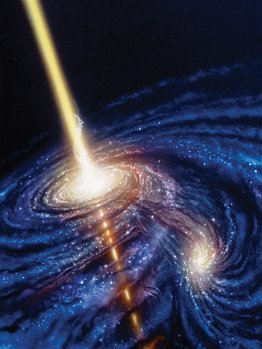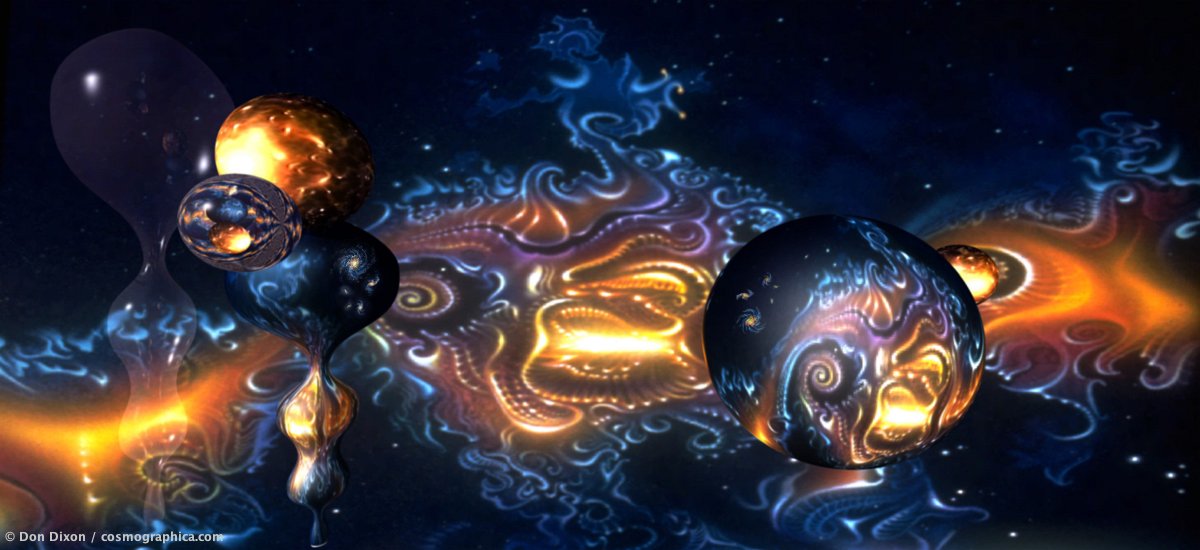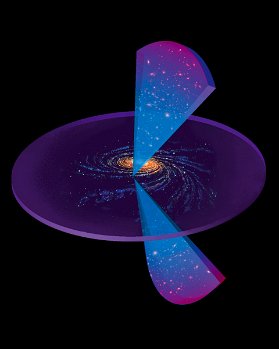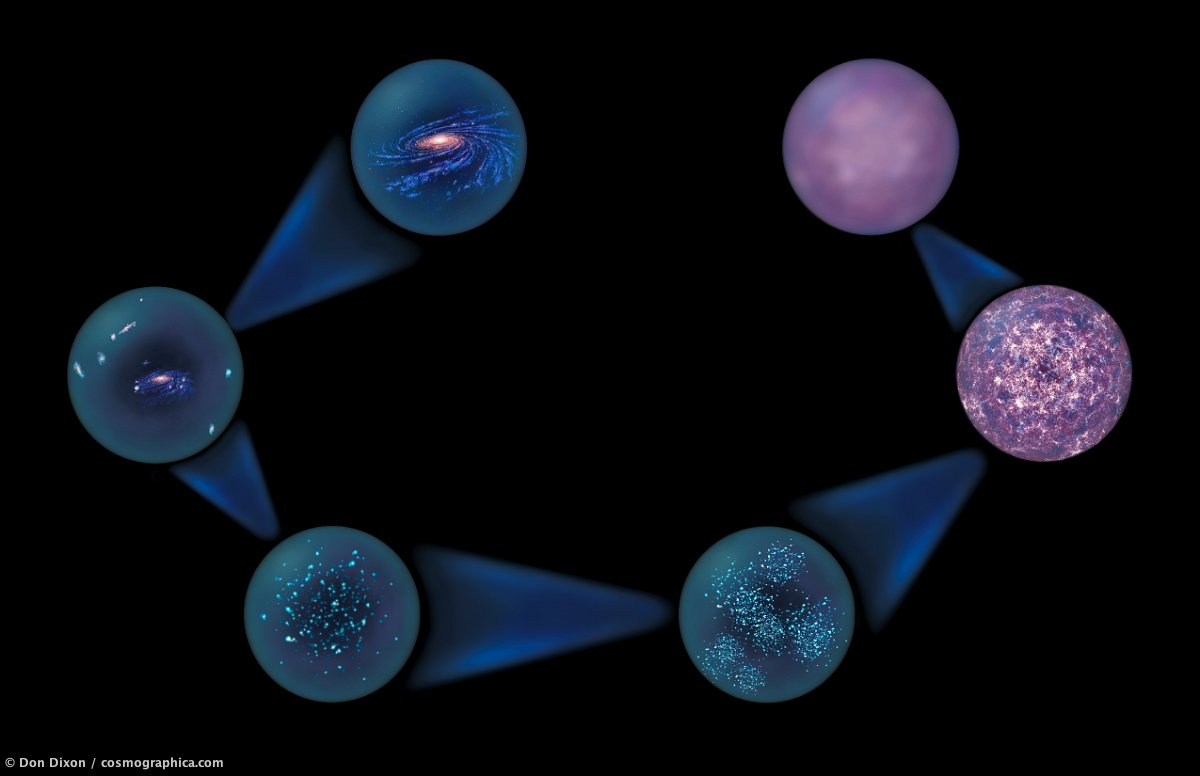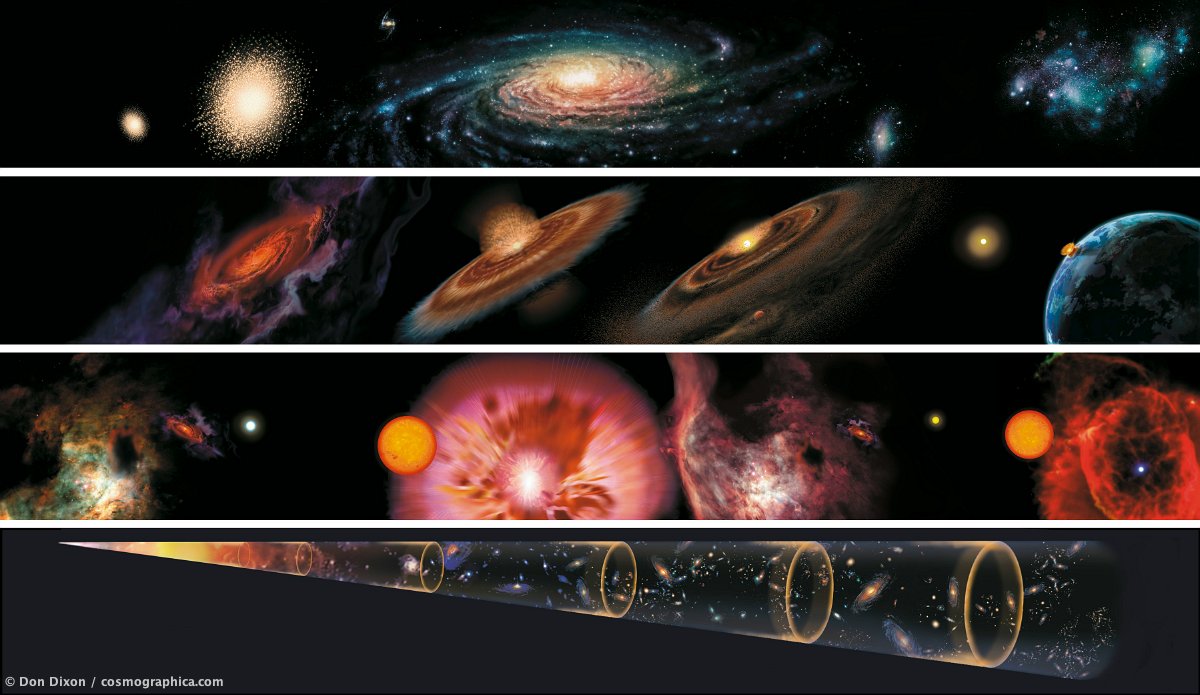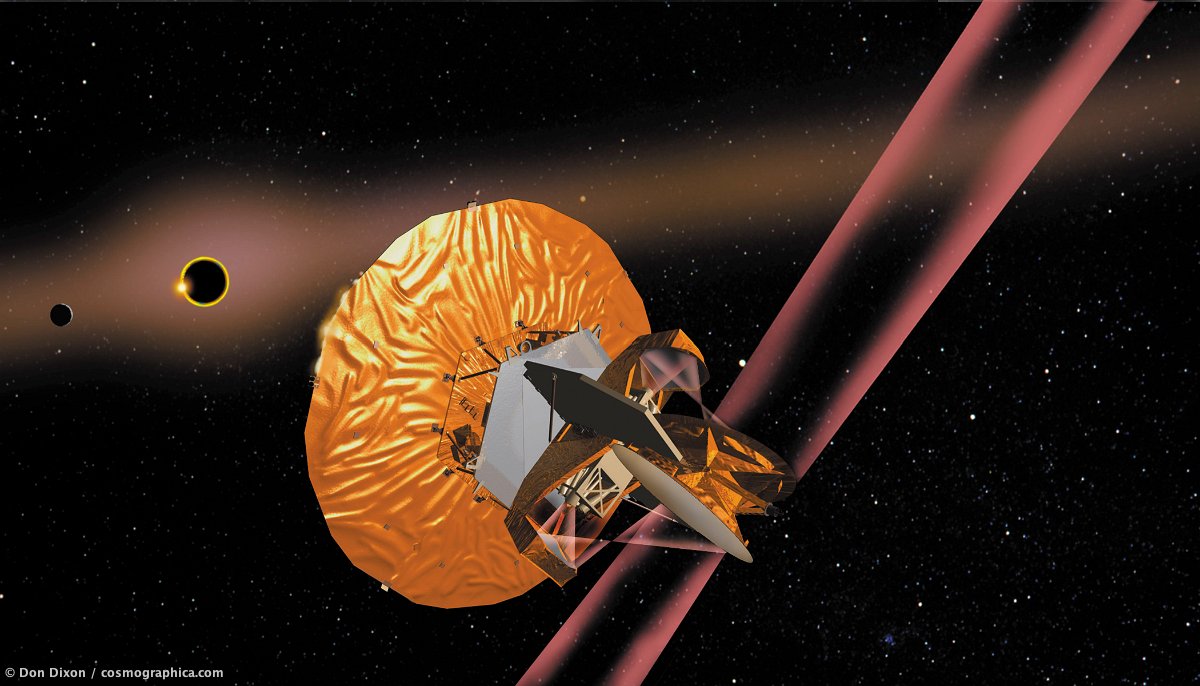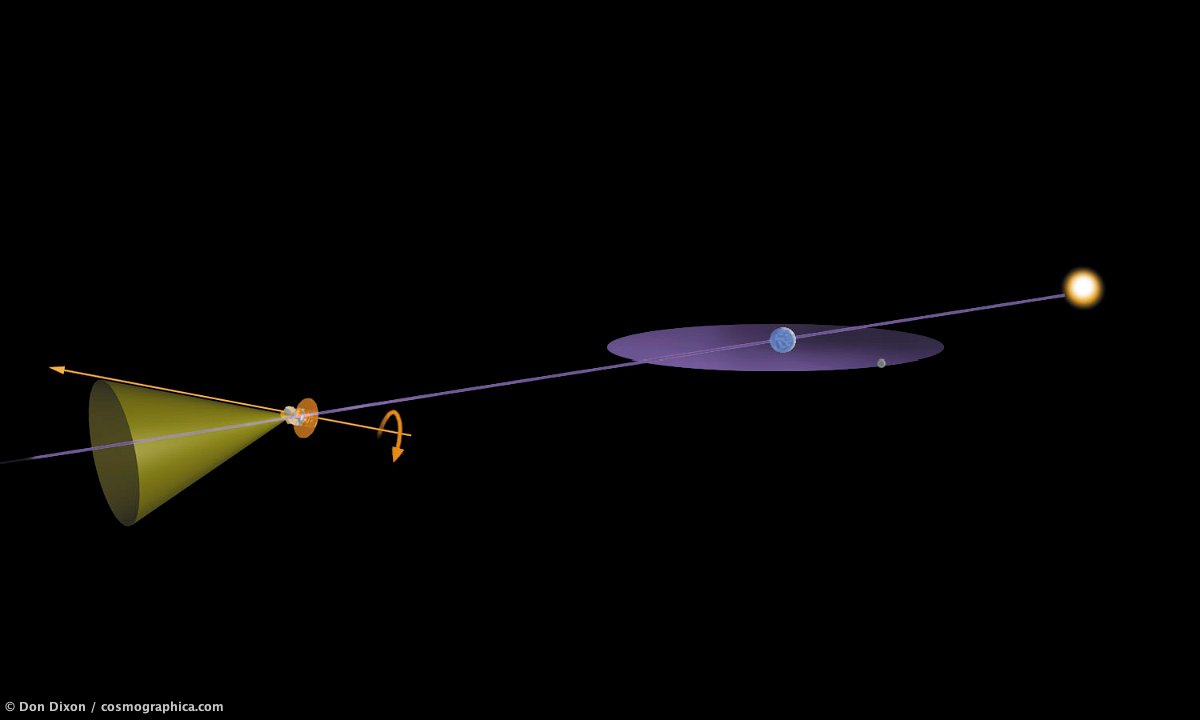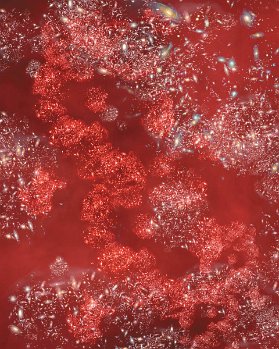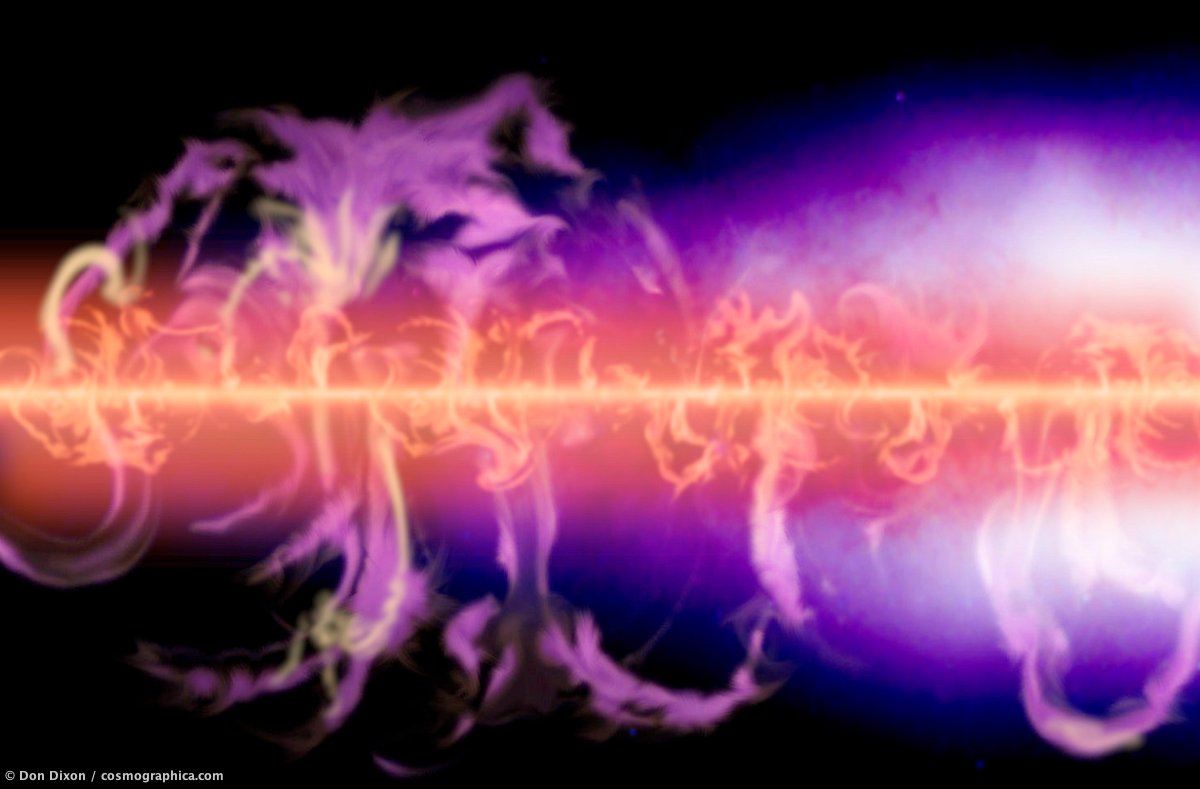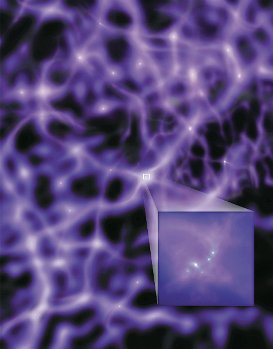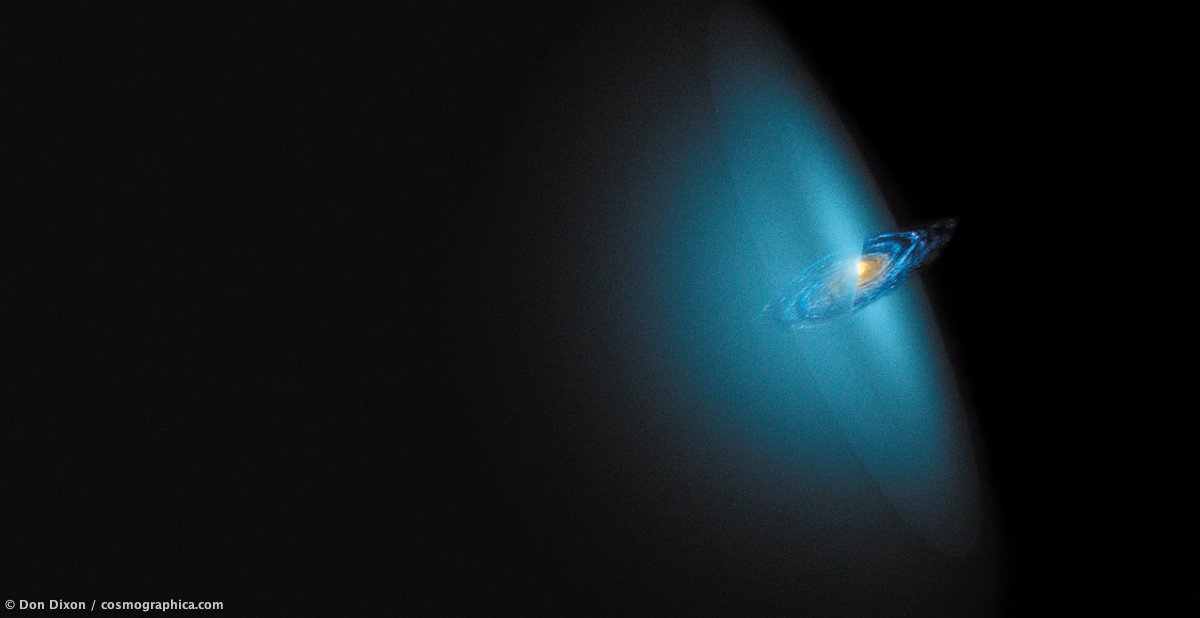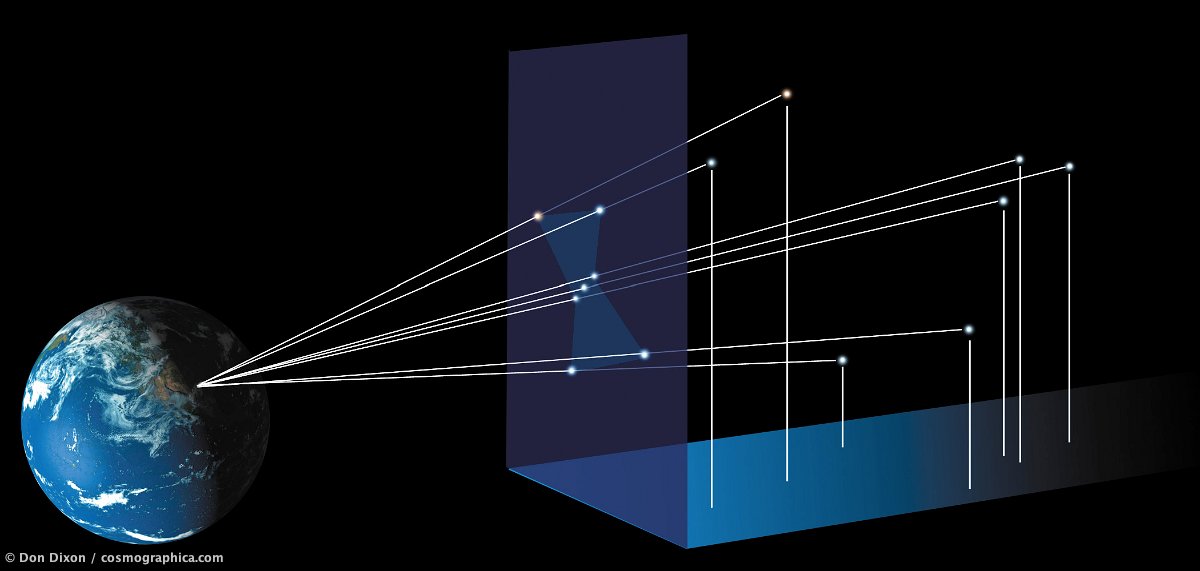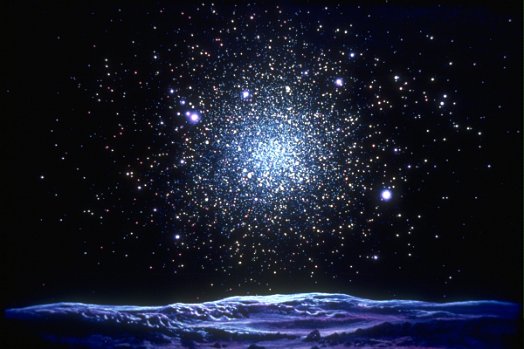
Globular clusters may the cores of galaxies that were disrupted by tidal interactions. Dozens of them swarm like bees about the core of the Milky Way ; acrylic on board, 1977. © Don Dixon 2007

Big Bang
A two dimensional portrayal of the Big Bang. Distance from the bright core represents increasing time. painting by Don Dixon
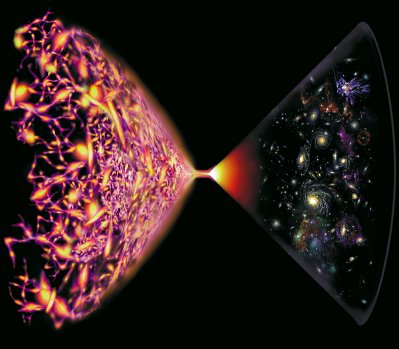
Dark Energy
mysterious energy causes the expansion of the universe to accelerate, cover, January 1999, Scientific American - painting by Don Dixon
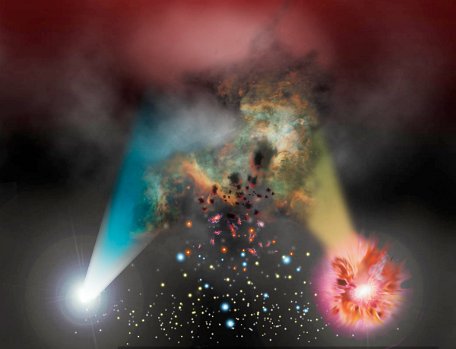
Starbirth and Death diagram
Created in collaboration with Bryan Christie, this diagram illustrates a kind of cosmic ecology. Radiation from bright stars and violently ejected gases from supernovae replenish and compress interstellar clouds of gas and dust, leading to the formation of new stars - painting by Don Dixon for Scientific American, © Don Dixon
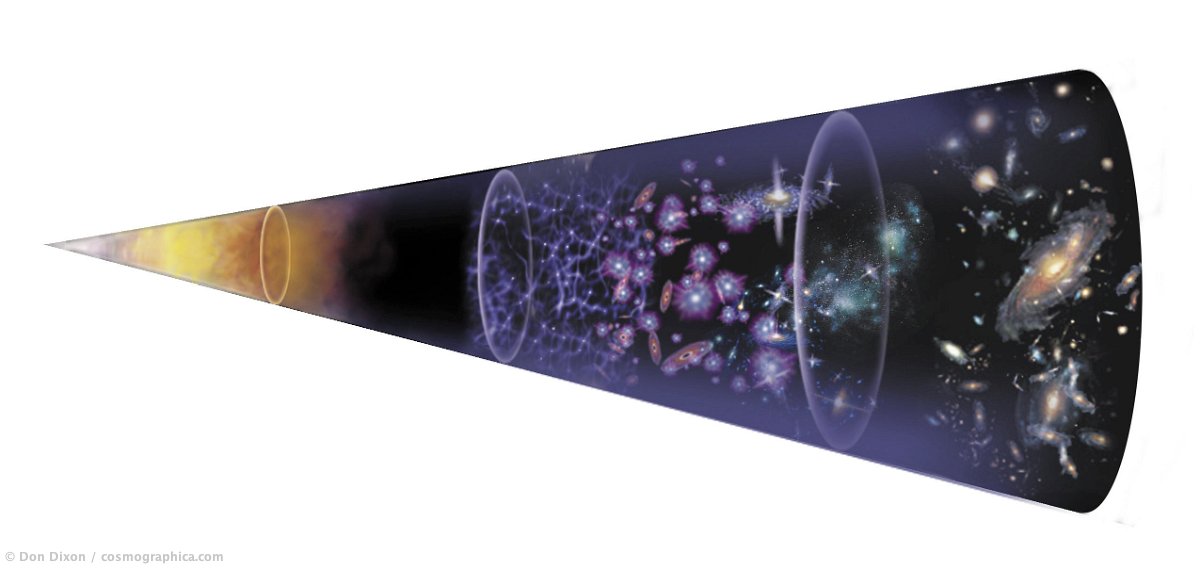
Universe Time Line
History of the universe in four stages: the Big Bang is marked by the left vertex, followed by a million-year dark age until the first stars form at the intersection of huge filaments of primordial hydrogen. A period of intense star formation and violent explosions lays the foundation for the universe we see today. - painting by Don Dixon for Scientific American
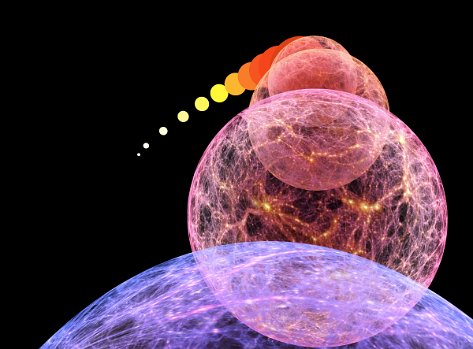
Cosmic Inflation
In the theory of cosmic inflation, the universe expands from the size of an atomic nucleus to a baseball in a tiny fraction of a second. Digital, 2005 © by Don Dixon.
The Most Ancient Stars
The most ancient stars in the universe may provide clues to its evolution. This montage, suggesting the formation of stars and galaxies out of the Big Bang, was the June, 2005 cover for "Astronomy" magazine.
Cosmic Brane
Some scientists speculate that, if microscopic black holes can be formed by the Large Hadron Collider, they may bridge the hyperdimensional gap between "branes" , demonstrating the existence of other universes. Digital, 2005, for Scientific American. © Don Dixon
Cat Eye Nebula
The strange and beautiful shapes of planetary nebulae, like the Cat's Eye, form through complex interactions between stellar winds and magnetic fields. Digital, 2004, for Scientific American. © 2005 by Don Dixon.
Hubble Ultra Deep Field Diagram
Diagram showing the very small part of the sky that was surveyed in the Hubble Space Telescope's Ultra Deep Field project. Digital diagram © Popular Mechanics, 2004.
The Cosmic Dark Ages
Although the early universe was immensely hot, it was dark, because photons were not able to travel through the highly-ionized gas. In this diagram of cosmic evolution, the upper left represents the cosmic dark age. Proceeding toward the lower right, the universe cools, atoms form, and filamentary structures condense to form galaxy clusters. © Don Dixon 2005.
Hypernova
Gamma rays burst from either pole of a shattered star undergoing a hypernova explosion. © Don Dixon, 2005.
Lonely Universe Diagram
The universe becomes very lonely as dark energy pushes most of it beyond our horizon. Diagram for Scientific American, 2004. © Don Dixon
Ancient Globular Cluster and asteroid
Strange clusters that seem to be a cross between open and globular clusters harbor stars that may provide clues to the evolution of the early universe. Cover for Astronomy, May 2005.
Type 2 Supernova Diagram
Diagram for Scientific American shows steps in a celestial cataclysm. As the nuclear reaction within a giant star's core falters, the core collapses, triggering an intensely energetic rebound that shatters the star. Artwork © 2007 Don Dixon / cosmographica.com
Type 1 Supernova Diagram
Diagram for Scientific American shows second type of supernova. Gas captured from a close companion star accumulates on the surface of a white dwarf star. The added pressure creates turbulence in the star's core and triggers a thermonuclear explosion. Artwork © 2007 Don Dixon / cosmographica.com
Orion Nebula - an earthlike world, child of one of the young stars in the Great Nebula in Orion, floats near the outskirts of this stellar nursery. Acrylic and gouache, 1974. Painting © by Don Dixon.
Solar System Stellar Neighborhood
The Sun's Neighbors -geography of the Milky Way Galaxy. Our sun orbits about 30,000 light years from the center of the galaxy, which contains approximately 400 billion stars. Astronomers currently know of only about a dozen stars within 10 light years of the Sun (inset cube). The large rectangle encompasses a region of about 10,000 light years. Digital, for Scientific American, 2009. copyright Don Dixon
